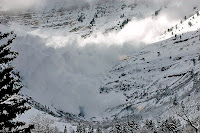The Fury and the force of Nature. For the Uniworld Gardens Batch fourth class. In case of Natural disasters, Prevention is just not possible. So, Preparation is the best course of action. One should always keep a 'survival kit' ready for such unforeseen circumstances. A basic Survival kit will contain -
The Nature is the biggest force. It’s fury can be devastating, deadly, and awesome! We discuss some key natural disasters in this class.
It is interesting to notice that many a times, one natural disaster triggers another, or they often happen together. Earthquakes can be accompanied by Volcanic activity, and they can trigger Tsunamis and Avalnaches. Hurricanes can spin off Tornadoes, Flooding or Fires. Each tiny change in the Earth’s dynamic and alive system can affect something else in the atmosphere.
1. Earthquakes:  The ground shakes and moves, without warning. The buildings and trees fall; bridges break, and huge cracks appear in the ground.
The ground shakes and moves, without warning. The buildings and trees fall; bridges break, and huge cracks appear in the ground.
Although the ground we walk on seems solid, it is actually moving!! The earth in divided into approx. 20 ‘parts’ called Tectonic Plates. The Tectonic plates are constantly shifting and moving, over a hot molten interior called mantle. The place where these plates meet is called a ‘fault’. When these plates rub together, the friction causes immense energy, that manifests itself as an Earthquake. Earthquakes generally happen along these fault lines. Epicenter is the place on Earth from where the vibrations spread out.
They are measured on the Richter scale – 1 being the mildest one that mostly goes unnoticed. An earthquake of magnitude 7 or more in a populated area is very devastating, resulting in huge loss of life and property.
2. Volcanoes: Volcanoes are also a result of Earth’s internal seismic activities, much like earthquakes. In fact, most of the Volcanoes are situated along the Pacific ‘Ring of Fire’, which is on a major fault line. 
Inside the Earth’s core is hot molten rock, called Magma. When the magma rises to the surface of the Earth, it is called Lava. Volcano is basically a hole in the Earth that allows lava to come out. Volcanoes can be classified as active, dormant and extinct.
Volcanoes can be deadly- lava , hot stones, Lahar and the volcanic ash and smoke can kill anything that comes in their way. But volcanoes can also be useful; the early earth was shaped by volcanic activity, the volcanic soil is very fertile too.
3. Tsunami: Tsunamis are caused by Earthquakes at sea.
When a huge earthquake vertically jolts the seabed by several meters, a lot of water is displaced- which starts travelling towards the coast in a straight line. The Tsunami wave is huge by the time it reaches the coast and can cause a lot of damage. The only warning sign of a Tsunami is that the waterline retreats just before a Tsunami, exposing hundreds of meters of seabed.
4. Avalanche:  An avalanche is restricted to mountaineous areas with a lot of fresh, loose snow. This snow can start falling at the slightest disturbance, and gains mass and momentum as it rolls down the slopes. An Avalanche can cover a whole village in no time.
An avalanche is restricted to mountaineous areas with a lot of fresh, loose snow. This snow can start falling at the slightest disturbance, and gains mass and momentum as it rolls down the slopes. An Avalanche can cover a whole village in no time.
5. Hurricane: 
6. Tornado: Tornadoes are an intresting phenomenon restricted mostly to a part of the US, called the Tornado alley.
Tornadoes are the most violent storms known to us, the wind speeds are so high that cannot be measured. A Tornado is a powerful column of spiralling winds, hanging down like a tail from the storm clouds. A powerful tornado can uproot trees and tear apart buildings that come in its way.
7. Floods: Wh en a normally dry area is submerged in water, it is known as a flood. Floods can happen slowly, due to seasonal heavy rains, or hurricanes. They can also arrive suddenly, known as flash floods. Flash Floods can happen due to a dam burst, earthquake or Tsunami, or as in a recent case, sudden course change of a river.
en a normally dry area is submerged in water, it is known as a flood. Floods can happen slowly, due to seasonal heavy rains, or hurricanes. They can also arrive suddenly, known as flash floods. Flash Floods can happen due to a dam burst, earthquake or Tsunami, or as in a recent case, sudden course change of a river.
Spoil-proof Food and bottled water for three days, Medicines, Blanket, Torch, Swiss Army knife, Whistle and Cell phone.
Tuesday, February 3, 2009
Forces of Nature
Subscribe to:
Post Comments (Atom)


No comments:
Post a Comment